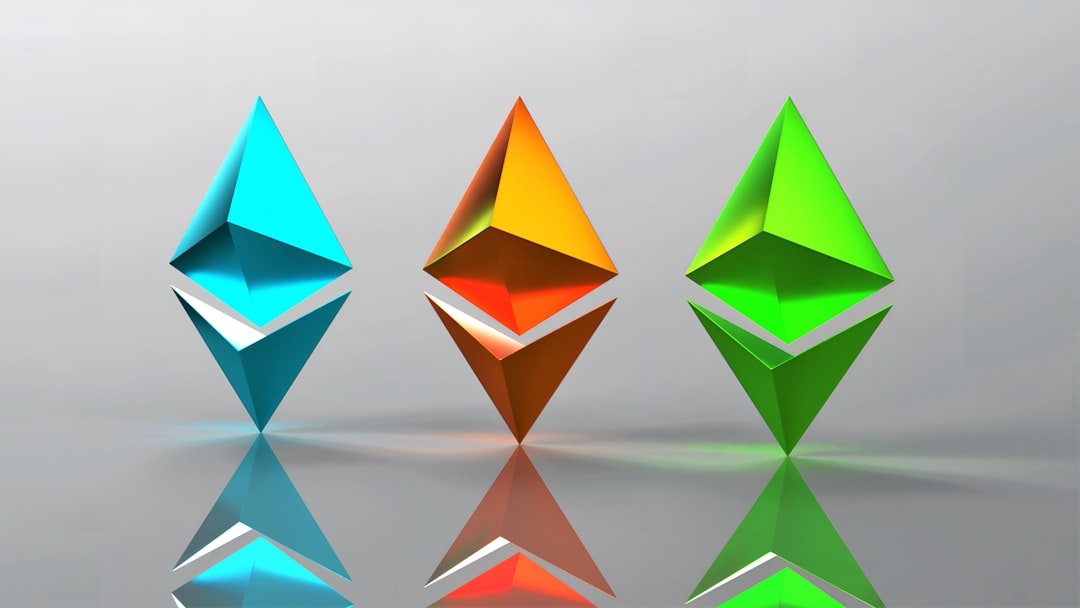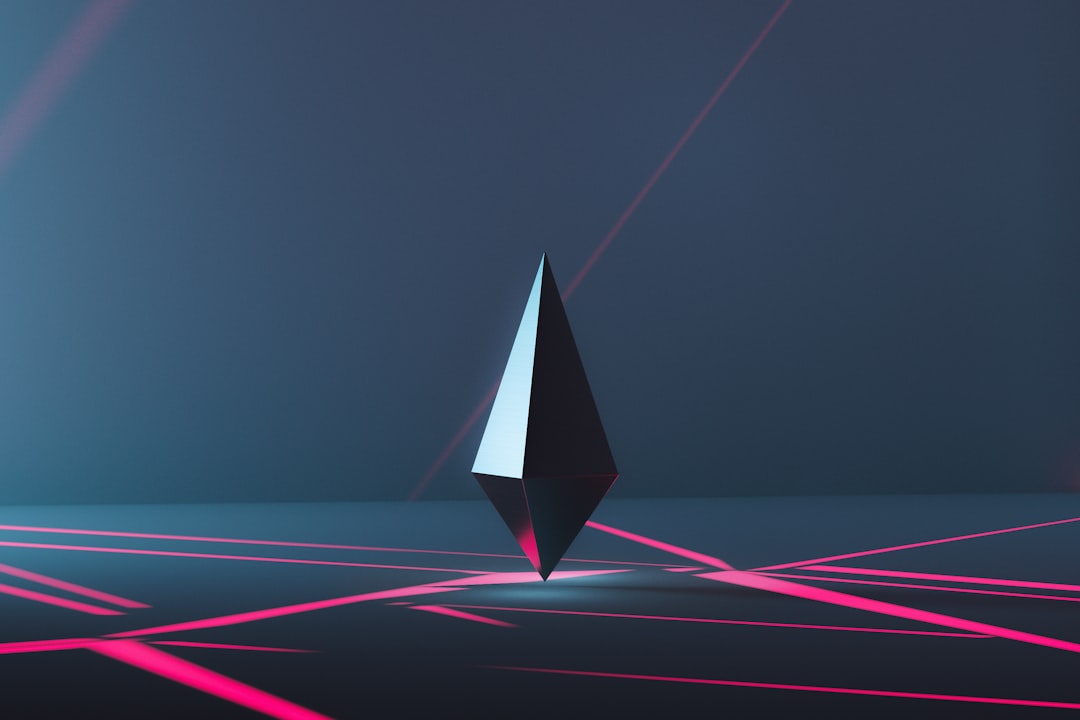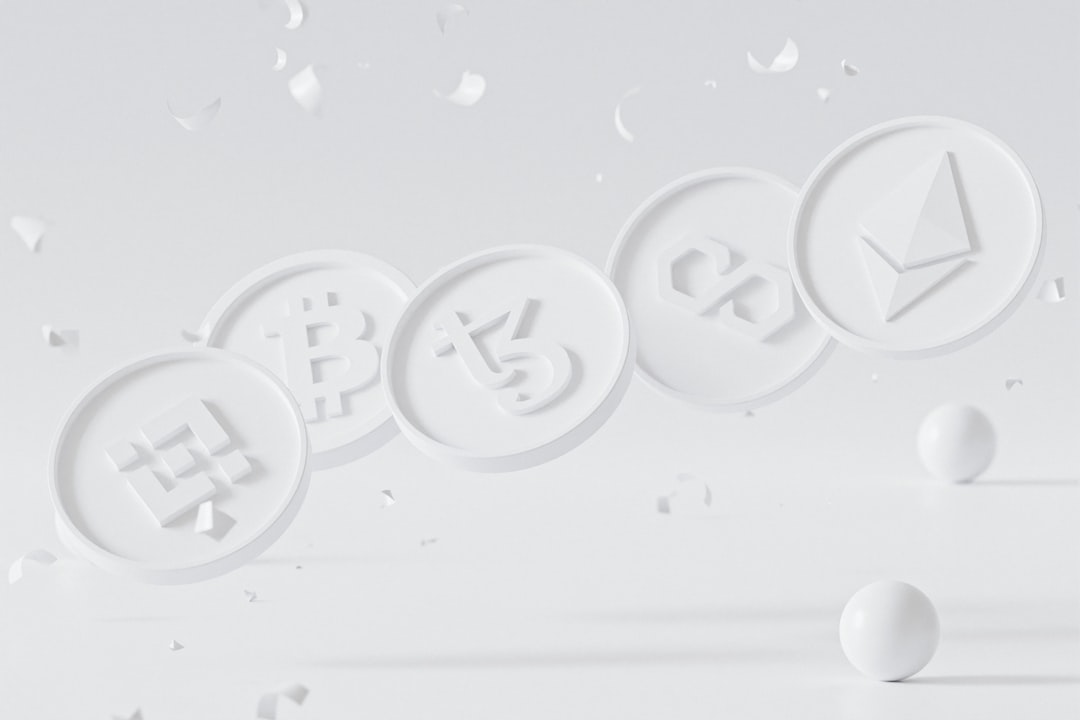Welcome to the fascinating world of cryptocurrency and art, where innovation and creativity collide to shape a new era of possibilities. In recent years, the rise of digital currencies like Bitcoin and Ethereum has captivated the attention of individuals, businesses, and even traditional industries. The art market, known for its rich history and deep-rooted traditions, has not been immune to the disruptive force of cryptocurrencies.
As an art enthusiast or investor, you may find yourself asking, “How exactly has cryptocurrency impacted the art market?” Well, buckle up, because we’re about to embark on a journey that explores the profound ways in which these two worlds intersect.
Blockchain technology, the backbone of cryptocurrencies, has emerged as a revolutionary force in the art world. This decentralized digital ledger system brings transparency, security, and immutability to the table, addressing long-standing challenges within the art market. From provenance to authentication, blockchain technology has the potential to transform the way art is bought, sold, and valued.
But hold on, what does this mean for traditional art investors? Cryptocurrency has opened up a whole new avenue for art investment, offering an alternative to the traditional art market. With the ability to buy fractional shares of artworks or invest in digital collectibles, cryptocurrency has democratized access to art investment, allowing individuals from all walks of life to participate in an asset class once reserved for the elite.
If you thought that was mind-blowing, wait until we dive into the world of crypto art. Non-Fungible Tokens (NFTs) and digital collectibles have taken the art world by storm, offering artists a unique opportunity to showcase and sell their digital creations. These one-of-a-kind tokens create scarcity in the digital realm and have sparked a frenzy of collectors eager to own a piece of the digital art revolution.
Of course, with every innovation comes challenges and controversies. The crypto art scene is not without its fair share of debates surrounding copyright infringement, environmental concerns, and the perceived value of digital art. As we explore the world of crypto art, we’ll delve into these complex issues and examine the ongoing conversations within the art community.
So, what does the future hold for cryptocurrency and its relationship with art? Only time will tell. However, one thing is for certain – the intersection of these two worlds has created a space for boundless creativity, innovation, and exploration. Whether you’re an art lover, investor, or simply curious about the possibilities that lie ahead, join us as we embark on this exhilarating journey into the future of cryptocurrency and its impact on the art market.
Get ready to redefine what it means to be an art enthusiast and embrace the limitless potential that lies at the intersection of art and cryptocurrency. The possibilities are truly awe-inspiring, and together, we’ll navigate this ever-evolving landscape with open minds and a sense of wonder. Let’s dive in!
The Emergence of Cryptocurrency and its Impact on the Art Market
Welcome to part 2 of our exploration into the fascinating world where cryptocurrency and art collide! In this section, we will delve into the emergence of cryptocurrency and its profound impact on the art market. Brace yourself for a mind-bending journey through an innovative landscape where technology, creativity, and finance intersect.
In recent years, cryptocurrency has taken the world by storm, disrupting traditional financial systems and revolutionizing various industries. One field that has undergone significant transformation is the art market. The introduction of cryptocurrencies, such as Bitcoin and Ethereum, has opened up a whole new realm of possibilities for artists, collectors, and enthusiasts alike.
So, how exactly has cryptocurrency impacted the art market? Well, let’s start with the decentralization aspect of cryptocurrencies. Unlike traditional financial systems that are controlled by centralized authorities, cryptocurrencies operate on a decentralized network called blockchain. This means that transactions can occur directly between individuals without the need for intermediaries like banks or galleries.
Imagine a world where artists can sell their creations directly to buyers, eliminating the hefty commissions typically charged by galleries. Cryptocurrencies enable artists to have more control over their work and the ability to monetize their talent in a more transparent and democratic manner.
Furthermore, the integration of blockchain technology has brought unprecedented security and authenticity to the art world. Counterfeiting and forgery have long been issues plaguing the industry, but with blockchain, each transaction and artwork can be recorded on an immutable digital ledger. This effectively ensures the provenance and authenticity of artworks, giving both artists and collectors peace of mind.
But the impact of cryptocurrency on the art market goes beyond just facilitating transactions and enhancing security. It has also given rise to new forms of art investment. Historically, investing in art was often restricted to wealthy individuals or institutional investors. However, the advent of cryptocurrencies has democratized art investment, allowing anyone with internet access and a few digital coins to participate.
Cryptocurrencies have enabled the creation of unique digital assets known as non-fungible tokens (NFTs). These tokens represent ownership or proof of authenticity for a specific piece of digital or physical art. NFTs have gained immense popularity, with artists and collectors embracing them as a new way to buy, sell, and trade art.
Through NFTs, artists can monetize their digital creations in ways never thought possible. Painters, musicians, photographers, and other artists can now showcase their work to a global audience and receive direct support from fans and collectors. This newfound accessibility and potential for financial success have inspired countless creatives to explore the possibilities of crypto art.
As with any disruptive technology, the emergence of cryptocurrency in the art market has not been without its fair share of challenges and controversies. Critics argue that the hype surrounding NFTs and crypto art has created a bubble, with sky-high prices and speculative investments. Others express concerns about the environmental impact of blockchain technology, particularly the energy consumption associated with cryptocurrency mining.
These challenges, however, should not overshadow the incredible potential that cryptocurrency holds for the art world. The future of cryptocurrency and its relationship with art is one of immense possibilities. It invites us to reimagine traditional art markets and explore new avenues of creativity, collaboration, and financial empowerment.
As we continue our journey, let’s embrace the curiosity and open-mindedness required to navigate this ever-evolving landscape. In the next section, we will dive deeper into the role of blockchain technology in the art world, uncovering its transformative potential and the opportunities it presents for artists and collectors alike.
Unlike traditional financial systems that are controlled by centralized authorities, cryptocurrencies operate on a decentralized network called blockchain.
The Role of Blockchain Technology in the Art World
In the ever-evolving world of art, an innovative technology has emerged, shaking the foundations of traditional art markets and revolutionizing how artists and collectors interact. This technology, known as blockchain, is making its mark as a game-changer in the art world.
But what exactly is blockchain? At its core, blockchain is a decentralized and transparent technology that records and verifies transactions across multiple computers, ensuring security and eliminating the need for intermediaries. It operates through a network of computers, known as nodes, which work together to validate and store information in blocks. These blocks are then linked together, forming an unchangeable and tamper-proof chain of data.
So, how does blockchain fit into the art world? Well, its introduction has brought about a paradigm shift by enhancing trust, transparency, and traceability throughout the entire art ecosystem. With blockchain, artists can now securely register and authenticate their artworks, protecting their intellectual property and ensuring that their creations remain tamper-proof. This has given rise to a new era of provenance, where art collectors can confidently trace the origins and ownership history of artworks, thereby reducing the risk of buying counterfeit or stolen pieces.
Moreover, blockchain technology has revolutionized the way art is bought and sold. Traditionally, art transactions involved numerous intermediaries, such as galleries, dealers, and auction houses, which often led to high fees and limited access for both artists and collectors. However, with blockchain, art transactions can occur directly between artists and collectors, eliminating the need for intermediaries and reducing costs. This decentralized approach opens up new possibilities for artists to reach a global audience, while collectors can discover and invest in emerging talents from all corners of the world.
Furthermore, blockchain has paved the way for fractional ownership, allowing art enthusiasts to acquire shares of high-value artworks. Through tokenization, artworks can be divided into digital tokens, enabling individuals to invest in art without requiring large sums of capital. This democratization of art investment empowers a broader range of individuals to participate in the art market, stimulating creativity and cultural diversity.
Beyond the realms of buying and selling, blockchain technology has also fostered new avenues of engagement with art. With the advent of Non-Fungible Tokens (NFTs), digital artworks can now be authenticated, owned, and traded securely on the blockchain. NFTs have given birth to a burgeoning market of crypto art, where artists create unique digital assets that can be bought, collected, and displayed in virtual worlds or on online platforms. This fusion of art and technology has unleashed a wave of creativity and innovation, attracting a new generation of artists and collectors who are eager to explore the endless possibilities offered by this digital frontier.
While the implementation of blockchain technology in the art world brings with it a myriad of opportunities, it also faces its share of challenges and controversies. Questions around copyright protection, intellectual property rights, and the environmental impact of blockchain mining have sparked ongoing debates within the art community. However, these challenges should not deter us from embracing the potential of blockchain technology to transform the art market into a more inclusive and transparent space.
The role of blockchain technology in the art world cannot be overstated. It has redefined how art is created, bought, sold, and experienced. By leveraging the power of blockchain, artists, collectors, and enthusiasts alike are given the tools to navigate the evolving landscape of the art market with confidence and transparency. As we embark on this exciting journey, the possibilities for the future of cryptocurrency and its relationship with art are boundless. Let us continue to explore, innovate, and embrace the transformative potential that lies at the intersection of art and technology.
Moreover, blockchain technology has revolutionized the way art is bought and sold.
Cryptocurrency as a New Form of Art Investment
As the world of art continues to evolve, so too does the way we perceive and invest in it. With the emergence of cryptocurrency, a new avenue for art investment has opened up, one that holds great potential and excitement for both artists and collectors alike.
Traditionally, art investment has been limited to physical artworks that can be bought and sold through galleries, auctions, and private sales. However, with the introduction of cryptocurrency, artists now have the opportunity to tokenize their creations and sell them as digital assets.
By leveraging blockchain technology, artists can create unique digital representations of their work, known as non-fungible tokens (NFTs). These NFTs are then bought and sold using various cryptocurrencies, such as Bitcoin or Ethereum, on online marketplaces specifically designed for digital art.
This new form of art investment offers numerous advantages. For artists, it provides a way to reach a global audience and monetize their creations directly, without the need for intermediaries like galleries or dealers. It also allows artists to retain more control over their work, as they can set their own prices and receive royalties whenever their NFTs are resold.
For collectors, cryptocurrency offers a unique opportunity to invest in art that is not constrained by physical limitations. Digital art can be easily stored, displayed, and shared online, allowing collectors to build diverse and dynamic portfolios. Additionally, the use of blockchain technology ensures the authenticity and provenance of each artwork, providing peace of mind for both artists and collectors.
But beyond the practical advantages, cryptocurrency as a form of art investment opens up a world of possibilities and creativity. It challenges traditional notions of what art can be and who can participate in the art market. It blurs the lines between art and technology, creating new opportunities for collaboration and innovation.
Imagine a future where anyone can invest in and support artists from around the world with just a few clicks. Where the barriers of entry into the art market are significantly lowered, allowing for greater diversity and inclusion. Where artists are empowered to explore new mediums and experiment with unconventional forms of expression.
Of course, like any emerging market, there are challenges and controversies surrounding cryptocurrency as a form of art investment. Questions of valuation, copyright, and environmental sustainability need to be addressed. However, these challenges should not overshadow the immense potential and excitement that this new frontier presents.
As we navigate this uncharted territory, it is important to approach cryptocurrency as a new form of art investment with an open mind and a curiosity for what the future holds. It is a space where traditional and digital art converge, where established artists and emerging talent can thrive, and where the boundaries of creativity are constantly being pushed.
So whether you’re an artist looking to explore new avenues for monetizing your work or a collector seeking to diversify your portfolio, cryptocurrency offers a world of possibilities. Embrace the excitement, stay informed, and be part of the ever-evolving relationship between cryptocurrency and art.
Traditionally, art investment has been limited to physical artworks that can be bought and sold through galleries, auctions, and private sales.
Exploring Crypto Art: NFTs and Digital Collectibles
As the world of cryptocurrency continues to evolve, it has given rise to a new and exciting form of art known as crypto art. This innovative medium merges technology, creativity, and finance in a way that has never been seen before. At the heart of this movement are Non-Fungible Tokens (NFTs), which have taken the art world by storm.
NFTs, unlike cryptocurrencies such as Bitcoin or Ethereum, are unique digital assets that are indivisible and cannot be exchanged on a like-for-like basis. Each NFT is assigned a specific value and can represent anything from digital artwork, music, videos, virtual real estate, and even tweets. These tokens are built on blockchain technology, enabling artists and creators to prove ownership and authenticity of their work.
One of the most intriguing aspects of crypto art is the way it challenges traditional notions of ownership and scarcity. In the past, art collectors would typically possess physical paintings, sculptures, or prints, which could be reproduced or copied. However, with NFTs, artists can create limited edition digital artworks that cannot be duplicated or forged, providing a new level of exclusivity and provenance.
Moreover, the digital nature of crypto art opens up exciting possibilities for interaction and engagement. Collectors can view and display their digital art pieces in virtual galleries or even in augmented reality, immersing themselves in a whole new artistic experience. This fusion of technology and art has the potential to democratize the art world, allowing artists from all corners of the globe to showcase their work to a global audience.
Another fascinating aspect of crypto art is the potential for artists to earn royalties on their work in perpetuity. Unlike traditional art sales, where artists often receive a one-time payment, NFTs allow creators to earn a percentage of every resale. This ensures that artists can continue to benefit from the increasing value of their work, even after it changes hands multiple times. This shift in the financial landscape of the art market has sparked discussions around the fair compensation of artists and the democratization of wealth within the art community.
Of course, like any emerging industry, crypto art is not without its challenges and controversies. Questions around the environmental impact of blockchain technology, the potential for copyright infringement, and the commodification of art have all been raised. However, these challenges should not overshadow the immense potential that crypto art holds for artists, collectors, and the art market as a whole.
The world of crypto art is still in its infancy, and as it continues to evolve, it is essential to approach it with an open mind and a willingness to explore new possibilities. The fusion of art and technology has always been a catalyst for innovation, and crypto art is undoubtedly pushing the boundaries of what is possible. So, whether you are an artist looking for new ways to express yourself, a collector seeking unique and exclusive pieces, or simply an art enthusiast curious about the future, exploring the world of crypto art is an adventure worth embarking on.
Of course, like any emerging industry, crypto art is not without its challenges and controversies.
Challenges and Controversies Surrounding Crypto Art
Crypto art, a fascinating intersection of technology and creativity, has gained tremendous popularity in recent years. However, this emerging field is not immune to challenges and controversies. As with any new innovation, there are bound to be differing opinions and debates surrounding its impact on the art world. Let’s dive into some of the compelling issues that have arisen in the realm of crypto art.
One significant challenge is the environmental impact of crypto art. The process of minting and trading non-fungible tokens (NFTs) requires an enormous amount of energy consumption. Critics argue that the carbon footprint associated with crypto art is alarmingly high, contributing to the already pressing concerns of climate change. This issue has sparked a heated debate within the art community, prompting artists, collectors, and platforms to explore more sustainable alternatives.
Another controversy surrounding crypto art revolves around the question of authenticity and ownership. Traditional art has relied on provenance and expert authentication to determine the legitimacy of a piece. However, with the advent of NFTs, anyone can claim ownership of digital artwork, raising questions about the true value and uniqueness of these digital assets. Some argue that the ease of reproducing and sharing digital art diminishes its exclusivity, while others believe that NFTs provide a new way for artists to assert ownership and monetize their work.
One topic that often ignites passionate discussions is the commercialization and commodification of art through crypto. Some criticize the increasing focus on monetary value and speculative trading that has emerged within the crypto art market. They fear that the emphasis on financial gains could overshadow artistic expression and creativity, turning art into a mere investment vehicle. On the other hand, proponents of crypto art argue that it provides artists with new avenues for exposure, financial independence, and direct interaction with their audience.
The issue of inclusivity is also a point of contention in the crypto art world. While digital art has the potential to reach a global audience and provide opportunities for underrepresented artists, the current landscape often favors established artists and those with financial resources to invest in digital assets. The lack of diversity in the crypto art space has been a subject of criticism, highlighting the need for greater inclusivity and accessibility.
Furthermore, the prevalence of scams and fraudulent activities in the crypto art market has raised concerns about the security and trustworthiness of the ecosystem. Due to the decentralized nature of blockchain technology, it can be challenging to regulate and monitor transactions effectively. This has led to instances of artwork being sold without the artist’s consent or counterfeit pieces being passed off as genuine. Striking a balance between decentralization and consumer protection remains an ongoing challenge.
Despite the challenges and controversies surrounding crypto art, it is important to approach these discussions with an open mind. By acknowledging the concerns and actively seeking solutions, the art community can shape the future of this exciting and rapidly evolving field. As technology continues to advance and the art world adapts, it is crucial to foster a dialogue that embraces innovation while upholding the values and integrity of art.
In the next and final section, we will explore what the future holds for the relationship between cryptocurrency and art, considering the potential for growth, collaboration, and transformative experiences.
The issue of inclusivity is also a point of contention in the crypto art world.
Conclusion: The Future of Cryptocurrency and its Relationship with Art
As we come to the end of this exploration into the fascinating intersection of cryptocurrency and art, one thing becomes abundantly clear: the future holds boundless possibilities. The emergence of cryptocurrency has already made a significant impact on the art market, revolutionizing the way we view and transact with art. And it doesn’t stop there.
Blockchain technology, with its inherent transparency and security, has found its place in the art world, offering a decentralized system that ensures provenance and authenticity. This breakthrough has the potential to radically transform the art market, eliminating the need for intermediaries and providing artists with greater control over their work.
But what about cryptocurrency as a form of art investment? This new avenue has opened doors for both seasoned collectors and newcomers to the art scene. With the rise of digital assets and the advent of non-fungible tokens (NFTs), investors now have the opportunity to own rare and unique pieces of art in digital form. The concept of ownership and scarcity has taken on a whole new meaning in the digital age.
And let’s not forget about the captivating world of crypto art. NFTs and digital collectibles have given rise to a new breed of artists who are pushing the boundaries of what is possible in the art realm. From digital paintings to virtual reality experiences, the possibilities for creativity and innovation seem endless. It’s exciting to think about how these digital works of art will continue to evolve and captivate audiences in the years to come.
Of course, with any new frontier, challenges and controversies are sure to arise. The concept of ownership and copyright in the digital realm is still being navigated, and there are concerns about the environmental impact of blockchain technology. However, it is important to approach these challenges with an open mind and a willingness to adapt. Only by embracing the potential of cryptocurrency and working together can we overcome these obstacles and create a sustainable future for the art world.
In conclusion, the relationship between cryptocurrency and art is still in its infancy, but the potential for growth and innovation is immense. The future holds the promise of a more inclusive and accessible art market, where artists can thrive and collectors can discover new forms of expression. It is up to all of us to embrace this future with curiosity and open-mindedness, as we continue to explore the uncharted territories of cryptocurrency and its impact on the art world. So let’s raise a virtual glass to what lies ahead – a future where art and technology intertwine to create something truly extraordinary.





